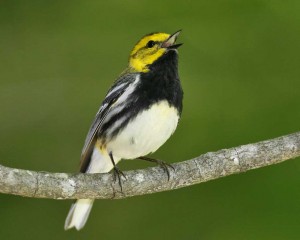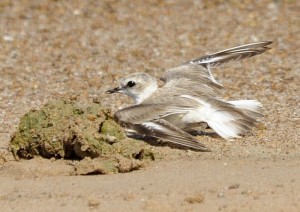Week 39 – 09 April 2017:
More Discoveries About the Behavioural Ecology of Birds
In the last entry of A Traveller’s Guide to Feathers, I briefly summarized some recent discoveries concerning the behaviour of birds published in an issue of the journal Behavioral Ecology. Of the thirty-nine article in the issue, four were about fish, seven considered mammals, one was about reptiles, and three examined amphibian behaviour. Fully thirteen papers were about birds, demonstrating the importance of birds to our understanding of the world.
Birds of some species are less likely to establish territories close to roads, and several specific causes of this behaviour have been put forward. Matthew Schepers and Darren Proppo (Calvin University, USA) were able to increase the number of territories of six birds in Michigan by playing recorded bird songs near roads. These birds included the Black-throated Green Warbler and the Rose-breasted Grosbeak. These finding may have conservation implications.
Alex Grendelmeier (Swiss Ornithological Institute) and his colleagues also used the playback of recorded songs to investigate bird behaviour. They found that Wood Warblers in northern Switzerland were attracted to a site in which the songs of their species was broadcast. Regrettably some measures of the birds’ breeding biology was reduced at the site with playback, calling into question the value of acoustic attraction in songbird conservation.
Could it be that female birds alter the sex ratio of their chicks, producing more of the sex that suits current conditions? Male Stitchbirds of New Zealand rely on carotenoids to produce brightly-coloured feathers to acquire territories and attract mates. Kirsty MacLeod (University of Cambridge, UK) and her colleagues found that additional carotenoids in the diet of female Stitchbirds did not cause them to lay a greater proportion of eggs that produced sons.
Michelle Hall (University of Melbourne, Australia) and her co-workers studied the territorial responses of male Superb Fairy-wrens to the playback of recorded songs with trills of different lengths. Longer songs are perceived as being more threatening. The researchers were unable to find differences in the reactions of either bold or shy individuals to songs of different threat level.
Some birds, including the Blue-backed Grassquit of South America, perform displays that appear to be both energetically demanding and difficult to complete. Lilian Manica (Universidade de Brasilia) and her colleagues found that the characteristics of the grassquit’s display that require vigour, and those characteristics that require skill, may limit each other, and that signallers of lower quality are particularly impaired.
Alessanra Costanzo (University of Milan, Italy) and her co-workers found that Barn Swallow parents provided more care to chicks that were more darkly-coloured. Dark-colouration was also positively related to the length of telomeres, an attribute of the cell’s chromosomes that indicates high quality. It seems that parent Barn Swallows invested more time and energy to their chicks of highest value.
Within a breeding season, the timing of the onset of reproduction can have significant implications for breeding success. Teresa Catry (Universidade de Lisboa, Portugal) and her colleagues used a long term data set to investigate laying decisions in Lesser Kestrels. They found that individual differences in timing had substantial consequences for reproductive performance, with a significant seasonal decline.
Birds of many species attempt to defend their chicks and eggs against potential predators, and some ground-nesting birds, like the Kentish Plover, are well known for their distraction displays. Miguel Gómez-Serrano and Pascual López-López (University of Valencia, Spain) found that males that displayed greater defence behaviour were likely to mated to females that did the same, and that more defence did result in greater survival of eggs and chicks.
In a laboratory setting, Julie Gibelli and Frédérique Dubois (Université de Montréal, Canada) studied Zebra Finches, quantifying now long it took each bird to forage near a novel object in the vicinity, and challenged individuals with learning tasks. Zebra Finches that were less fearful of new things were also less flexible in their behaviour.
There are many reasons why a researcher might choose to study birds, rather than animals of other sorts. They are comparatively large, not particularly secretive, active during the day, exhibit a wide array of interesting behaviours, and are frequently quite numerous. In the field of behavioural ecology, for instance, we owe much of our understanding of important principles to our study of birds.
Photo credits: Black-throated Green Warbler, © Brian E. Small, www.audubon.org; Kentish Plover, female demonstrating the broken wing display, © Jaysukh Parekh “Suman”, www.orientalbirdimages.org



